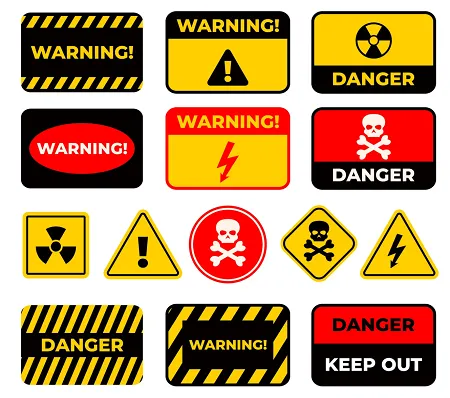Safety symbols play a crucial role in our daily lives, serving as the universal language of safety that transcends linguistic barriers. These symbols provide quick and understandable warnings and information about potential hazards in various environments, from workplaces to public areas. This article explores different categories of safety symbols, their significance, and how they contribute to preventing accidents and ensuring a safe environment for everyone.
What are Safety Symbols?
Safety symbols are graphical representations that warn users about potential hazards and provide information necessary to prevent injury or property damage. They are designed to be simple and universally recognizable, often using specific colors and shapes to convey their message effectively.
Categories of Safety Symbols
Safety symbols can be broadly classified into several categories, each tailored for different types of hazards:
1. Prohibition Signs
These signs are meant to tell what is not allowed to prevent hazardous situations. Common examples include the “No Smoking” sign or the “No Entry” sign. These are typically round with a red border, a diagonal line, and a black symbol on a white background.
2. Warning Signs
Warning signs alert about possible dangers or risks in the vicinity, such as high voltage, explosive materials, or slippery floors. They are usually triangular, with a yellow background and a black pictogram.
3. Mandatory Signs
Mandatory signs specify an action that must be taken to maintain safety, like wearing safety goggles or ear protection. These signs are round, with a white pictogram on a blue background.
4. Emergency Information Signs
These signs indicate emergency exits, first aid kits, or evacuation routes. They are designed to be highly visible and are usually green with a white pictogram.
5. Fire Safety Signs
Specifically used to denote equipment and procedures related to fire safety, these signs help locate fire extinguishers, fire hoses, and alarm activation points. They are red with white imagery.
Importance of Safety Symbols
The importance of safety symbols is immense as they:
- Prevent Accidents: By providing essential information at a glance.
- Save Time: During emergencies, quickly guiding people to safety.
- Break Language Barriers: Offering vital cues universally understandable without needing text.
How to Use Safety Symbols Effectively
For safety symbols to be effective, they should be:
- Clearly Visible: Placed at eye level and in well-lit areas.
- Unobstructed: Not hidden behind doors, decorations, or other objects.
- Relevant: Only used where applicable to avoid information overload.
- Consistent: Employed consistently across similar situations to avoid confusion.
Examples and Significance of Common Safety Symbols
Lorem ipsum dolor sit amet, consectetur adipiscing elit. Ut elit tellus, luctus nec ullamcorper mattis, pulvinar dapibus leo.
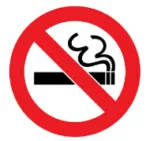
No Smoking
Warns against smoking to prevent fire hazards.
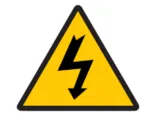
High Voltage
Alerts about electrical risks to prevent accidents

Wear Safety Goggles
Ensures eye protection in potentially hazardous environments.
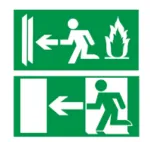
Exit
Guides towards the nearest exit in case of emergencies
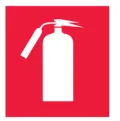
Fire Extinguisher
Locates firefighting equipment for quick response during a fire.
Detailed Insights into Specific Safety Symbols
Prohibition Signs
Prohibition signs are essential in maintaining discipline and safety in areas prone to specific hazards. The “No Smoking” sign, for example, is not just about preventing the act of smoking but is crucial in environments where flammable materials are present, potentially preventing catastrophic explosions or fires.
Warning Signs
These signs serve as the first line of defense against workplace injuries. For instance, the “High Voltage” sign warns individuals of immediate electrical hazards, giving them the opportunity to take precautions to avoid shocks or other serious injuries.
Mandatory Signs
The effectiveness of mandatory signs lies in their directness and the immediate action they require. The “Wear Safety Goggles” sign in laboratories or industrial environments ensures that individuals protect their eyes from chemical splashes or flying debris, which is a common cause of workplace injuries.
Emergency Information Signs
These signs are crucial in emergencies. They guide people efficiently out of buildings during fires, earthquakes, or other emergencies. The standard green-and-white color scheme of these signs is intended to be easy to locate through smoke or chaos, ensuring that exits and safety equipment can be found quickly.
Fire Safety Signs
Fire safety signs are potentially lifesaving in their role. They are strategically placed to provide a roadmap to firefighting resources. In the event of a fire, quick access to extinguishers and fire alarms can make the difference between minor damage and major disaster.
Cultural Variations and Legal Requirements
The design and use of safety symbols can vary significantly across different cultures and countries. For instance, while the ISO (International Organization for Standardization) provides general guidelines, local laws may dictate specific requirements for size, color, and placement of safety symbols to accommodate cultural nuances or particular legal standards.
Training and Education
Proper training and education about safety symbols are paramount. Organizations should invest in comprehensive online induction training programs to ensure that all employees understand the meanings of safety symbols and their associated actions. Regular drills and updates on safety procedures can help reinforce this knowledge.
Safety symbols are a critical part of maintaining safety in various settings. By understanding and correctly using these symbols, individuals and organizations can significantly reduce the risks of accidents and ensure a safer environment for everyone. It’s important that both employees and the general public are educated about these symbols and their meanings to enhance safety awareness and compliance.
In conclusion, whether it’s a simple instruction to wear personal protective equipment or a warning about hazardous materials, safety symbols convey essential information that protects us from harm. Let’s embrace and adhere to these symbols to create a safer world for ourselves and future generations.
